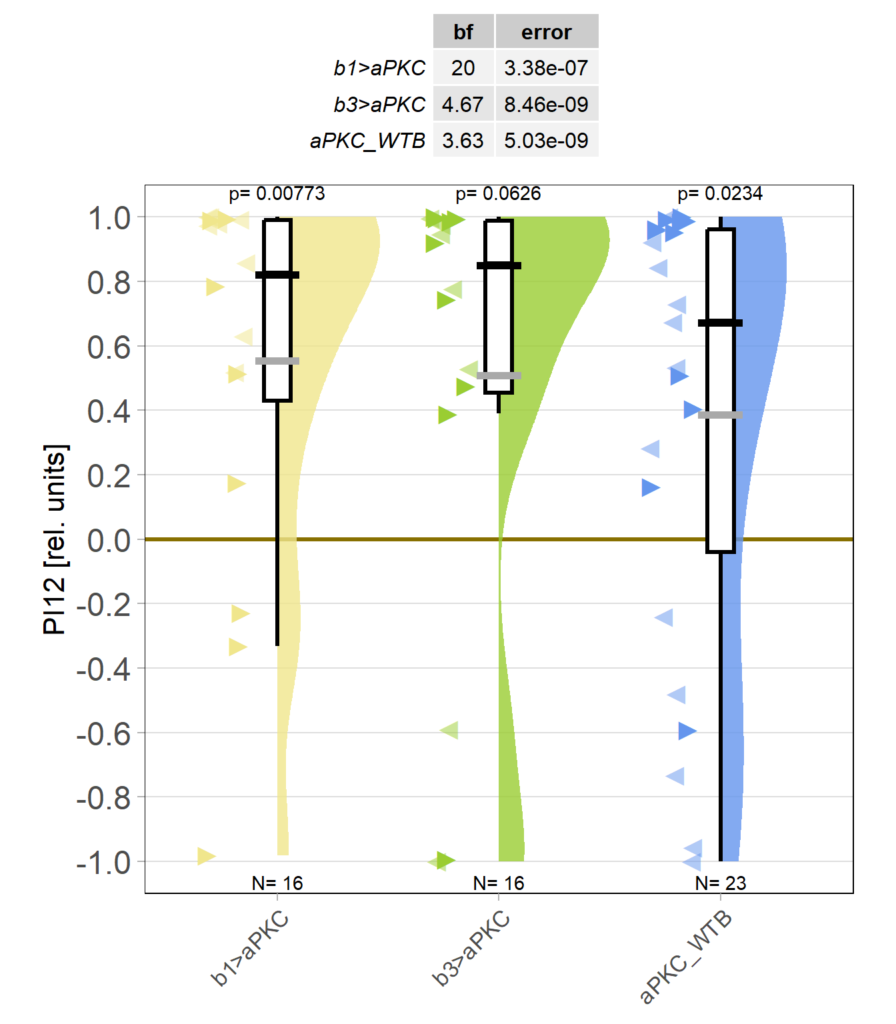Final aPKC KO in b1/b3 motor neurons results – for now!
on Monday, December 2nd, 2024 2:57 | by Björn Brembs
As it seems the flies without aPKC in b1 or in b3 steering motor neurons seem to learn fine, I’ve decided to leave this dataset where it is:

But I will try and analyze their optomotor response in more detail, maybe these flies can dissociate between the spontaneous preference and the OMR plasticity?
Category: operant self-learning | No Comments
b1/b3 aPKC KO flies still learning, OMR unaffected
on Friday, November 22nd, 2024 3:47 | by Björn Brembs
Now with over 20 flies in each group, it becomes more and more apparent that both the flies without aPKC in either b1 or b3 steering motor neurons still learn just fine:

As with the aPKC knock-out in FoxP neurons, also here, the optomotor response seems normal as well:

Interesting is the scatter in the slope parameter for the control flies:

Category: operant self-learning, Optomotor response, PKC | No Comments
Getting there: knocking out aPKC in b1 or b3
on Friday, November 15th, 2024 4:02 | by Björn Brembs
Slowly getting the sample size going. As of now, it seems aPKC is either not needed in steering motor neurons b1 and b3, or that knocking aPKC out in only one of them is not sufficient to have an effect on operant self-learning. Shown is the first 2min test period after 8min of training, all three groups seem to show learning, at least at this stage:

Category: operant self-learning, PKC | No Comments
Early days: testing individual steering motor neurons in self-learning
on Monday, October 28th, 2024 11:39 | by Björn Brembs
Now that we have established that the plasticity underlying self-learning is located somewhere in the steering motor neurons of the ventral nerve cord, the next question is: which of the neurons are involved. To this end I have now started to knock-out aPKC in either B1 neurons or in B3 neurons. The muscles innervated by these motor neurons are an agonist/antagonist pair and serve to advance/delay the turning point of the wing, leading to a larger or smaller, respectively, wing stroke amplitude. Asymmetry in the activity of these neurons leads to yaw torque – which is the behavior we condition. In the first two weeks, I noticed that all three groups (B1- knock-out, B3 knock-out and genetic controls) seem to fly reasonably well. So far, it doesn’t seem like there are any striking differences between the lines, but it is still early days and about three times more animals are needed before one can draw any firm conclusions:

Category: operant self-learning, PKC_localisation | No Comments